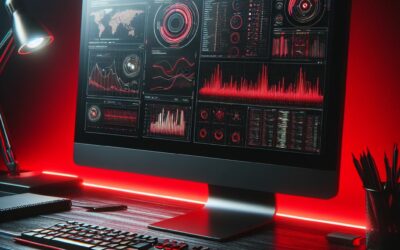We would like to inform you that the network infrastructure within our data centers is scheduled for maintenance from Saturday, April 20th, 2024, at 09:00 AM CEST to Sunday, April 21st, 2024, at 06:00 PM CEST. We apologize for any inconvenience this may cause. During...
End-of-Life ASGARD Management Center v2 and Master ASGARD v2
Nextron announces the end-of-sale and end-of-life dates for the ASGARD version 2 and Master ASGARD version 2. The last day to order the affected products was February 29, 2024. Customers with active service contracts will continue to receive support as shown until...
Protecting Your Business: Addressing the Microsoft Exchange Vulnerability Crisis
Discover how to safeguard your business from the ongoing Microsoft Exchange vulnerability crisis highlighted by the German Federal Office for Information Security (BSI). Learn about critical warnings, the importance of patching, and how automated compromise assessments with THOR Cloud Lite can fortify your cybersecurity strategy.
Unveiling KamiKakaBot – Malware Analysis
Back in January 2023 Group-IB first reported and documented the TTPs of DarkPink, an APT group that targets the Asia-Pacific regions. We’ve been monitoring KamiKakaBot samples since September of last year. And at the start of this year in January we’ve noticed 2 new...
Tales Of Valhalla – March 2024
Every month the Nextron Threat Research Team (NTRT) shares insights into evasive threats that we’ve seen in the wild via our Valhalla service. The aim is to highlight interesting samples our rules detected and have or had very low detection rates as reported by...
New Chief Revenue Officer
Nextron Systems continues its forward-looking mission with the introduction of a new Chief Revenue Officer and advanced cybersecurity solutionsIn a determined response to the rising cyber threat situation worldwide, Nextron Systems, a leading provider of IT security...
Announcing the Launch of Management Center v3.0
We are pleased to announce the release of ASGARD Management Center v3.0, marking a significant update from version 2.17.2. This latest version introduces key improvements, an upgraded operating system, and advancements in time synchronization and user interface. Aimed...
New rules of the game in the fight against cybercrime
Dietzenbach, 13.02.2024 - Nextron Systems, a leading provider of innovative IT security solutions, continues its pioneering mission to combat and detect cybercrime at an early stage. As an emerging industry thought leader, Nextron is taking decisive action to protect...
End-of-Life ASGARD Analysis Cockpit Version 3
Nextron announces the end-of-sale and end-of-life dates for the ASGARD Analysis Cockpit version 3. Customers with active service contracts will continue to receive support until September 30, 2024, as shown in the table below. End of Life Announcement Date The date...
Announcing the Launch of Analysis Cockpit v4.0
We are pleased to announce the release of Analysis Cockpit v4.0, marking a significant update from version 3.10. This latest version introduces key improvements, including restructured database indices for enhanced performance, an upgraded operating system, and...
Cyber Security 2024: Key Trends Beyond the Hype
In this blog post, our threat research team presents the most critical cyber security trends for 2024. While many in the field are focusing on headline-grabbing topics like AI, our emphasis is on practical, impactful issues already shaping the cyber landscape. We...
Introducing the Nextron Community Discord Server
We are pleased to announce the launch of the Nextron Community Discord Server, a dedicated space for technical dialogue and support for Nextron's range of products. This server aims to facilitate a deeper understanding and more effective use of our solutions.Key...











